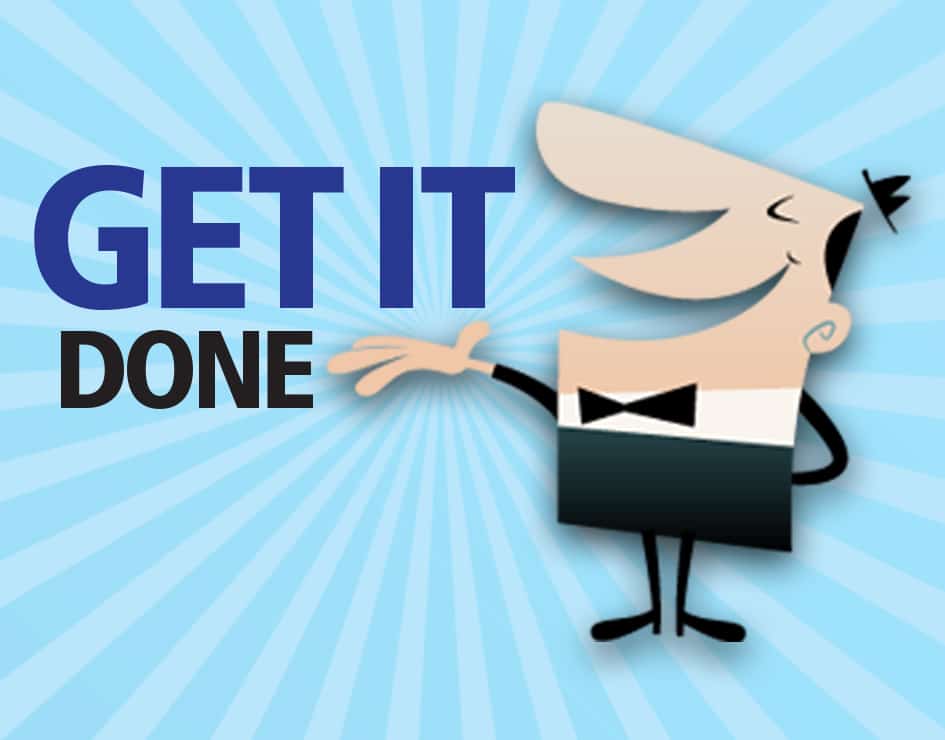The day that first computer appeared on a lawyer’s desk, it brought a promise of simplicity. Technology would organize, systematize and calendarize the daily chaos, leaving our human time and minds free to address the really critical stuff. Ha! If anything, the chaos deepens. So we’re particularly excited about Daniel Gold’s new column. He’ll be bringing us good ideas for amping up our productivity and changing the way we get things done—in a big way!
As lawyers, almost everything we do is a project. Rarely do we handle things that can be completed in one action—and long gone are the days when using our red Lawyer’s Diary to plan our calendar and to-dos in one location was enough. Instead, we need the right system in place to help us get things done. So what’s the solution?
In 2007, I heard about a book by David Allen called Getting Things Done. And when I read it, I loved every page. This one book fundamentally shook the foundation of what I thought it meant to be organized and to manage my time. If you haven’t yet heard of this methodology—which is called “GTD” for short—it has a bit of a cult-like following online. In this first installment of “Get It Done,” I’m going to provide an overview of this system. In future posts, we’ll dive deeper into its discrete phases, and also look at apps for tablets and smartphones that can help skyrocket your productivity even further.
Creating a Trusted System to Become More Productive
At its core, GTD is a simple—albeit not too simple—approach to managing your tasks and your calendar. The process involves writing down every single task that you have to accomplish. Then, through daily and weekly reviews, you analyze that list for “where” you need to be in order to get certain tasks done. For example, do you need to be at your computer to do a particular task? Can it only be done in your office? Is it an errand that requires being at a particular place? Is it a phone call or email that you can tackle anywhere from your smartphone? Or is it something that can only be done at home? These “wheres” are otherwise known as “contexts” in the GTD system.
Next, you place each of your tasks by context into separate lists.
Once you’ve done that, examine your tasks even more. Will any of these tasks take more than one step to actually complete? For instance, let’s say your task is “File Motion for Summary Judgment in the Jones Matter.” Well, we all know that will require several steps. You will likely need to do case research, review deposition transcripts, draft the statement of facts, draft the legal argument, have the client review before filing, etc. Therefore, this seeming task is actually a “project,” according to the GTD methodology. As you go through this exercise, you will probably notice that you have placed several such projects in your task lists. Seeing this will help you better understand each and every real task you need to accomplish in order to get things done more effectively.
So now, you will erase the “file motion” entry from your tasks list and put it in what is called a projects list instead. Then add each one of the tasks required for the motion’s filing (the research, draftings, etc. from above) and put them on your context lists.
The final piece in this top-level review is learning how to better control your calendar. David Allen advises that you do not, under any circumstances, fill your calendar with tasks! He calls the calendar your “hard landscape”—think of it as sacred ground for only those appointments that have specific actionable dates and times, such as your meeting with a client at 2 p.m. Tuesday or your oral arguments on Friday at 3 p.m.
Knowing What You Can Accomplish When
So, how do you know when to get each of your tasks done if they have not been assigned due dates? The idea is to be more discerning and take a more strategic look at your tasks and appointments. Think about what you can accomplish in the time you have available. Weigh that against each task’s priority, along with the amount of energy you have to complete certain tasks. Then block out your calendar for two hours so you can write your statement of facts at 8:30 a.m. Then block out two hours later to do legal research at, say, 3 p.m. By strategically slating tasks this way, you are in control of your time and your calendar.
Also, by having separate lists of action items broken down by contexts, you can easily see what phone calls you can knock out while you’re in the car by looking at your calls list. Or, if you have some downtime at the courthouse, look at your emails list to see what you can easily cross off of that list, too.
In my next posts, I’ll break down the five phases of GTD more—and discuss how to take advantage of some paper tools and awesome apps for your iPhone and iPad, too.
Daniel Gold is a productivity author, podcaster, keynote speaker and consultant. He is the moderator of the GTD Virtual Study Group podcast, co-host of The Productive Life Show podcast, author of author of Evernote: The Unofficial Guide to Capturing Everything and Getting Things Done and Official Springpad eBook. In addition to his column at Attorney at Work, you can read Daniel’s posts on the official DEG Consulting website, or join him on Facebook, Google+ and Twitter.
Illustration ©ImageZoo.

















